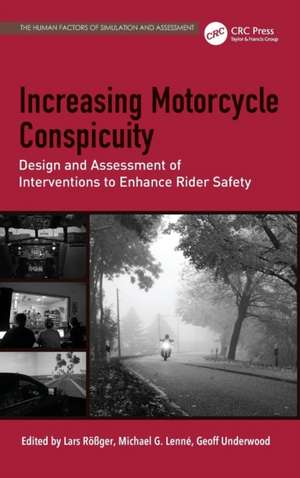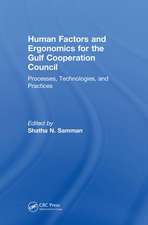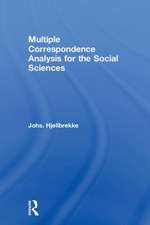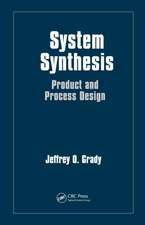Increasing Motorcycle Conspicuity: Design and Assessment of Interventions to Enhance Rider Safety: Human Factors, Simulation and Performance Assessment
Autor Lars Rößger, Michael G. Lennéen Limba Engleză Hardback – 28 mar 2015
| Toate formatele și edițiile | Preț | Express |
|---|---|---|
| Paperback (1) | 351.26 lei 6-8 săpt. | |
| CRC Press – 6 noi 2017 | 351.26 lei 6-8 săpt. | |
| Hardback (1) | 1114.70 lei 6-8 săpt. | |
| CRC Press – 28 mar 2015 | 1114.70 lei 6-8 săpt. |
Preț: 1114.70 lei
Preț vechi: 1359.39 lei
-18% Nou
Puncte Express: 1672
Preț estimativ în valută:
213.29€ • 222.72$ • 176.13£
213.29€ • 222.72$ • 176.13£
Carte tipărită la comandă
Livrare economică 15-29 aprilie
Preluare comenzi: 021 569.72.76
Specificații
ISBN-13: 9781472411129
ISBN-10: 1472411129
Pagini: 258
Dimensiuni: 156 x 234 x 16 mm
Greutate: 0.61 kg
Ediția:Revised edition
Editura: CRC Press
Colecția CRC Press
Seria Human Factors, Simulation and Performance Assessment
ISBN-10: 1472411129
Pagini: 258
Dimensiuni: 156 x 234 x 16 mm
Greutate: 0.61 kg
Ediția:Revised edition
Editura: CRC Press
Colecția CRC Press
Seria Human Factors, Simulation and Performance Assessment
Notă biografică
Lars Rößger is Psychologist and Senior Research Fellow at the Unit of Traffic and Transportation Psychology at the Faculty of Traffic Sciences, University of Technology Dresden. Over the past 10 years he has been engaged in several national and international funded research projects dealing with various issues of applied psychology in the traffic and transportation sector. His main research interest include drivers’ attitudes and behavioural changes, human decision-making in the context of traffic related decisions and drivers’ visual attention and its means of measuring. Results of his research work are published in peer-reviewed journal papers and book chapters both on national and international level. His current research focuses on time perception and route related decisions in simulation scenarios. Mike Lenné is an Adjunct Professor (Research) at the Monash Injury Research Institute, Melbourne, Australia. He was awarded a PhD in Experimental Psychology from Monash University in 1998, and in 2014 was made a Professor at the Monash University Accident Research Centre where he had led the Human Factors research team for nearly eight years. His research over the past 15 years has centred on the measurement of human performance using human-in-the-loop simulation across road, rail, and military settings. While widely published, his research has had significant impacts on road safety policy and practice. His current research examines the impact of intersection and rail level crossing design on road user performance, and the role of distraction and drowsiness in crashes and development of associated countermeasures. Professor Geoff Underwood is Director of the Accident Research Unit at the University of Nottingham, and has served as the Head of the School of Psychology at Nottingham. His degrees are from the University of London (BSc, DSc) and the University of Sheffield (PhD). He is a Fellow of the British Psychological Society (FBPsS) and a Fellow of the R
Cuprins
Foreword, Stephane Espie. Part I Setting the Stage: Motorcycle Safety and Conspicuity: PTW crashes and the role of perception, Zoi Christoforou, George Yannis, John Golias and Peter Saleh Psychological factors in seeing motorcycles, Vanessa Beanland, Michael G. Lenne and Lars Rossger Mechanisms underpinning conspicuity, Geoff Underwood. Part II Case Studies Focusing on Visual Saliency and Conspicuity Treatments: How conspicuity influences drivers' attention and manoeuvring decisions, Geoff Underwood, Editha van Loon and Katherine Humphrey 'Should I stay or should I go?' Examining the effect of various conspicuity treatments on drivers' turning performance, Eve Mitsopoulos-Rubens and Michael G. Lenne Design studies on improved frontal light configurations for powered two-wheelers and testing in laboratory experiments, Lars Rossger, Jens Krzywinski, Frank Muhlbauer and Bernhard Schlag Visual factors affecting motorcycle conspicuity: effects of car daytime-running lights and motorcycle headlight design, Viola Cavallo and Maria Pinto. Part III Case Studies with Additional Focus on Top-Down Influences: Is the poor visibility of motorcycles related to their low sensory and cognitive conspicuity or to the limited useful visual field of car drivers?, Joceline Roge and Fabrice Vienne Can drivers' expectations and behaviour around motorcycles be influenced by exposure?, Vanessa Beanland, Michael G. Lenne and Geoff Underwood Powered two-wheelers' conspicuity: the effects of visual context and awareness, Pnina Gershon and David Shinar. Part IV Implications Drawn from the Case Studies: Summarised assessment of the results on motorcycle conspicuity, Lars Rossger, Michael G. Lenne and Stephane Espie. Index.
Descriere
How driving simulation, field studies and laboratory experiments can be used to improve rider safety is illustrated in this text. It outlines the factors that contribute to the visibility of powered-two-wheelers (PTWs) and their detection by car drivers, and presents case studies to illustrate how the various methods can be used to explore the contribution of these factors. The final chapter highlights the utility of a simulation-based approach to improving PTW safety and discusses this method’s future applications.




















